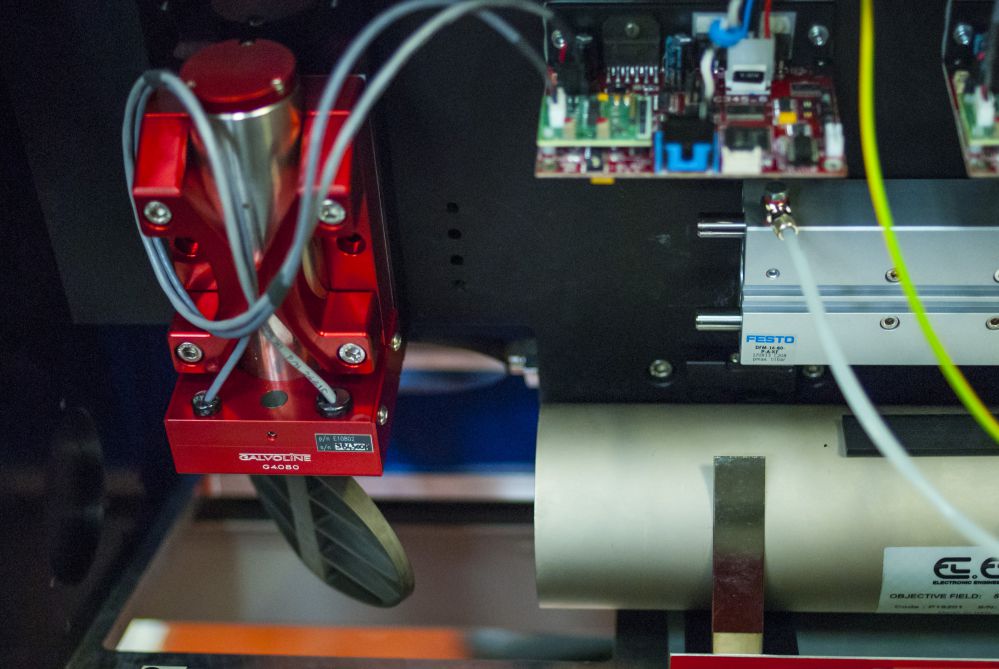Let’s continue our journey of discovery of the different CO2 laser applications for the packaging industry. In the past articles, we’ve already described how laser micro-perforation can drill accurate holes on plastic film to create packages suitable to preserve fresh food. Laser micro-perforation applications, unlike traditional mechanical micro perforation applications, offer speed, flexibility, and extreme accuracy.
In order to improve the shelf life of products, it is often necessary to continuously control gas exchanges between the interior and the exterior of a plastic bag. Laser micro-perforation allows us to tightly control these gas transmissions, allowing us to easily package fresh products as well as preserve their quality.
It is no coincidence that the CO2 laser has seen a broad application in this field. The packaging industry knows very strict production rules and specifications. Packaging must not only guarantee the quality of the product, but must also meet requirements in terms of mechanical strength, packaging hygiene, and food safety. Besides that, all requirements also have to be reconciled with an aesthetic appearance. Poor packaging could reduce the perceived quality of the product, and is thus a crucial factor in influencing consumer buying behavior.
In this article we’re going to describe another application of the CO2 laser: we will talk about sealing plastic food bags.
Conventional methods to seal plastic food bags
Why is the CO2 laser an innovative process for the sealing of food bags? To get an answer to this question we have to briefly discuss the traditional methods used to seal plastic food bags.
Traditionally the sealing of plastic food bags is a welding process achieved through the application of heat and pressure. In this process, two sheets of plastic film are joined and welded together. This process is mostly mechanical, meaning that parts of the machine have to be changed every time a different packaging process is executed, in order to meet the packaging needs of diverse products. Traditional machines are heavy, due to their working parts that need to be fastened securely.
A production line of this kind is not flexible, while food manufacturers may need to apply different packaging techniques within the same production cycle. This would mean that the manufacturers have to the change machine parts or perform other maintenance operations, which results in lower productivity.
Laser hermetic sealing plastic food bags
The process of laser sealing of plastic bags is part of the hermetic welding process of thermoplastics. The most commonly used bags in the packaging industry are transparent and made of polypropylene or polyethylene.
These materials absorb the 10.6 μ wavelength of the CO2 laser very well. The laser beam reaches the surface of the material to be welded thanks to a scanning head. Subsequently, the laser heats up the surface so as to reach the melting temperature of the material, allowing it to weld the two plastic films together.
The entire process is incredibly fast: the speed achieved with this welding method to hermetically seal plastic bags allow to seal dozens of pieces per minute.
What are the advantages of hermetic laser sealing?
The advantages of using a laser sealing system to hermetically seal plastic food bags are endless:
- You can change the shape and size of the packaging material to be sealed without the need for long breaks in the production flow. It is not necessary to create custom-made parts since the laser can be applied to any type of container and to any type of machining even within the same production cycle.
- The sealing can even be carried out on very thin plastic films without risking any damage to the material. This allows extremely accurate machining operations and reduces the amount of material used, and thus reduces industrial waste.
- The CO2 laser is compact in size and light in weight since mechanical parts or other bulky mechanisms are not required. The laser system thus fits well into production facilities with confined spaces.
- Like any other laser process, the welding of plastic bags is a non-contact process. This means, among other things, that it is aseptic, and thus perfect for the packaging of food products.
Required components for a laser system setup
You may ask yourself right now which components are required for a laser system set-up. It is difficult to define in detail the diverse components or elements that will be part of the system. Each customer has its own needs in terms of power, production speed, material to be treated, etc. However, it is possible to define the following three basic elements of a similar system.
CO2 Laser source
The CO2 Laser source generates the laser beam that will work your materials. El.En. CO2 laser sources are available in different output powers, ranging from 150W to 1200W.
Laser scanning head
The laser scanning head is a device that “moves” the laser beam while keeping it perfectly focused on the point that needs to be worked. El.En.’s scanning head executes this process at very high-speed thanks to the beryllium mirrors mounted on galvanometric motors.
Control Software
The advantage of laser processing is that the entire process is controlled digitally. Through the software, you can control all relevant machining parameters and perform on-the-fly changes without interrupting the process workflow.



